Kyoto’s beautiful changing seasons and rich traditions make it a worthy place to visit all year round. Depending on the time you come, the landscape and ambiance of the city may change completely. With its timeless charm and ancient traditions, Kyoto hosts seasonal events throughout the year, each offering a glimpse into the city’s rich heritage and vibrant contemporary scene. Follow this guide so you can experience the top seasonal events in Kyoto, curated month by month. From centuries-old celebrations to cutting-edge festivals, you will find the best things to do in Kyoto each season in this article. Whether you’re a seasoned traveler or a first-time visitor, let this curated selection be your compass to unlock the secrets of Kyoto’s calendar, ensuring an unforgettable journey through the heart of Japan’s cultural capital.
Click the button below to book your stay at The Millennials Kyoto.
Contents
January
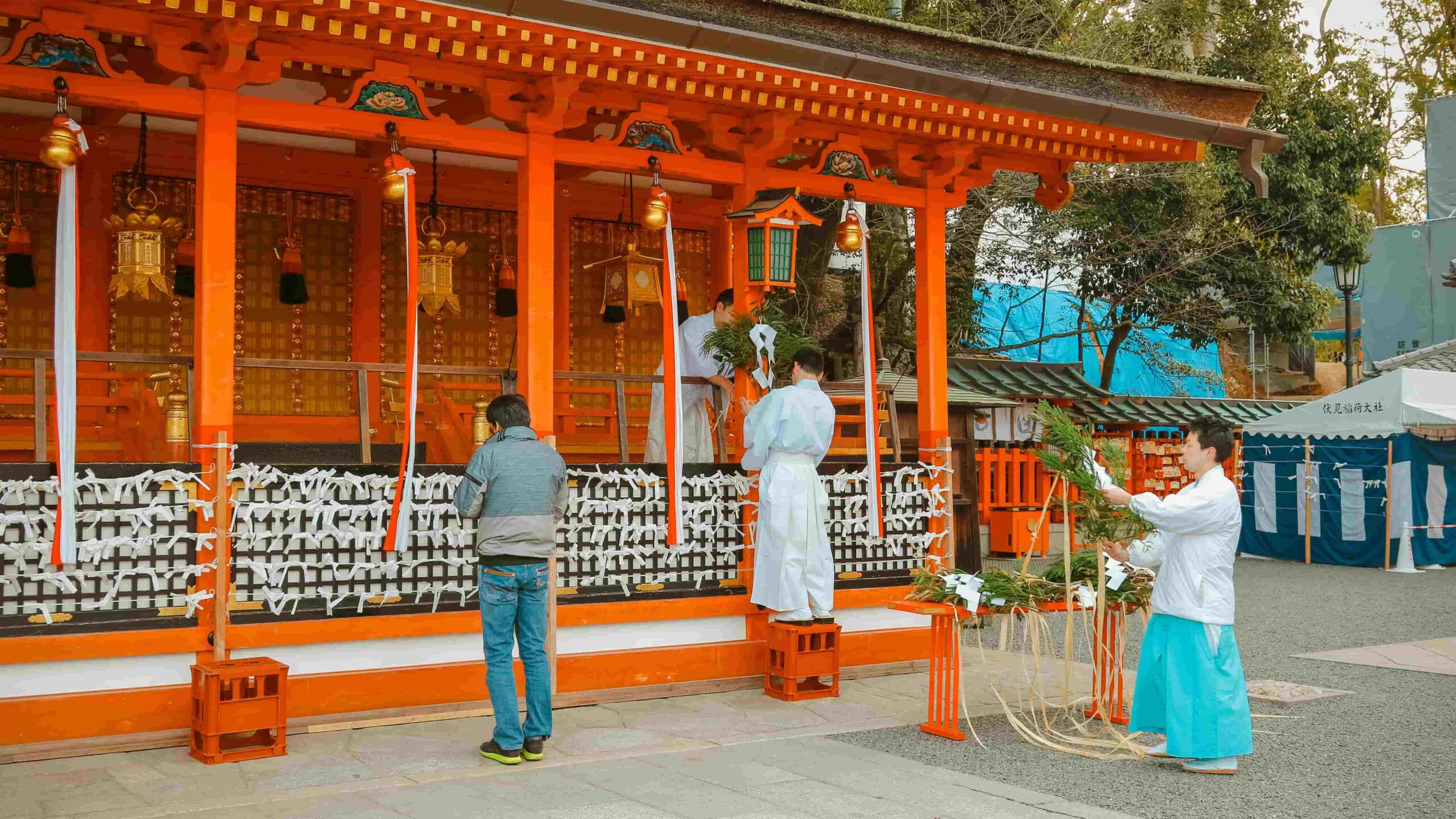
In Kyoto, the city of timeless traditions and cultural richness, Hatsumode takes on a unique and enchanting flair in January. Amidst the sacred surroundings of Shinto shrines and Buddhist temples, locals and visitors alike partake in the age-old ritual, donning traditional attire to enhance the spiritual experience. As an integral part of the January festivities, Noh performances grace the cultural landscape, offering a mesmerizing glimpse into classical Japanese musical dramas. What makes this experience even more captivating is the fact that these Noh performances are often open to the public and free of charge, allowing everyone to participate in and appreciate the cultural splendor that Kyoto has to offer during the auspicious month of January. Click here for more information on free Noh performances in January.
February
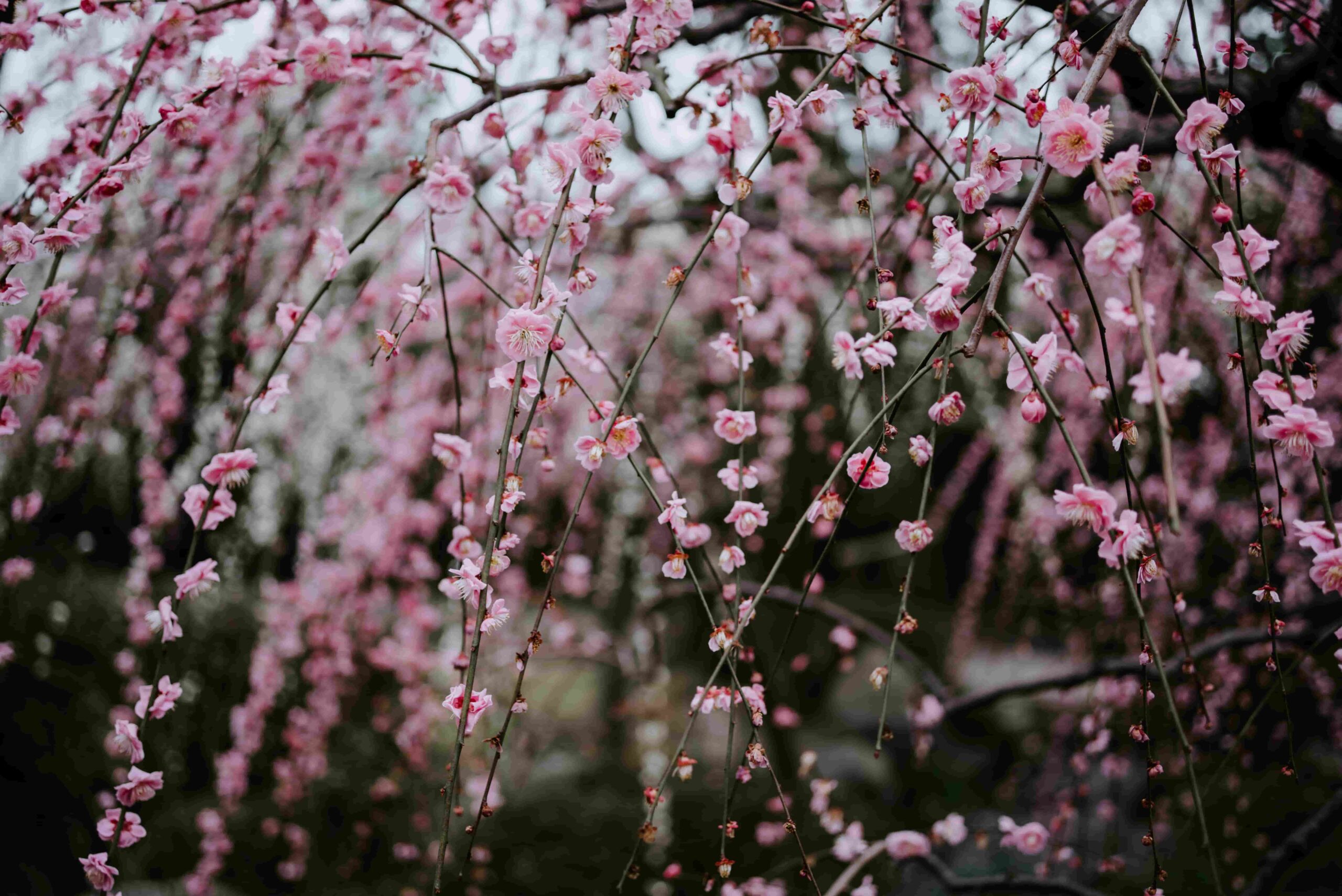
February in Kyoto is a captivating time where tradition and nature converge in a harmonious dance. The month commences with Setsubun, a lively celebration where locals engage in the boisterous ritual of bean-throwing to cast away misfortune and invite good luck into their lives. The spirited atmosphere is contagious, making it a delightful experience for visitors. For those seeking the quintessence of Kyoto’s cultural charm, a visit to Yasaka Shrine is a must. Here, the mesmerizing performances of maiko, apprentice geisha, unfold against the backdrop of the shrine’s serene surroundings. The grace and poise of these traditional performers add a touch of elegance to Kyoto’s winter ambiance. As the month progresses, nature takes center stage with the Plum Blossom Festival. Kyoto’s parks and gardens burst into a kaleidoscope of colors as plum blossoms bloom, signaling the imminent arrival of spring. The subtle fragrance and delicate beauty of these early bloomers create a captivating spectacle, drawing visitors from near and far.
March
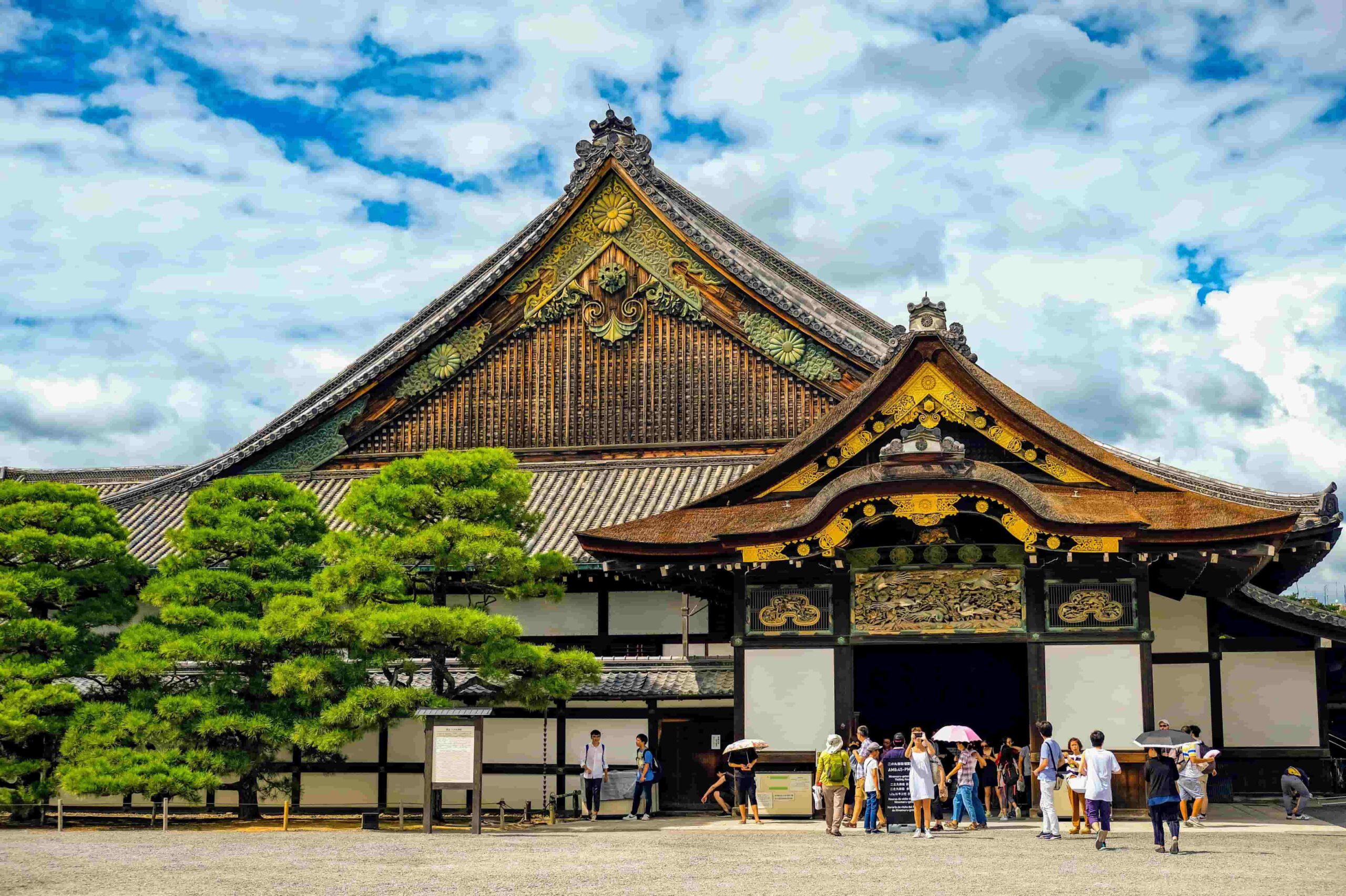
March in Kyoto signifies the onset of spring, bringing forth a plethora of enchanting activities that capture the essence of the city’s rich cultural heritage. The Kyoto Art Fair stands out as a vibrant celebration, uniting artists, enthusiasts, and collectors in a dynamic showcase of creativity. The city transforms into an artistic canvas, with numerous museums participating to display an array of contemporary and traditional artworks. As daylight fades, Kyoto undergoes a magical transformation with captivating light-up events illuminating its historic landmarks. Participating sites include the iconic Kiyomizu-dera and the traditional Gion district, where enchanting illuminations cast a surreal glow, accentuating Kyoto’s timeless beauty. Nijo Castle, a UNESCO World Heritage Site, takes center stage in March with the blooming plum blossoms in Ninomaru Garden. The castle’s cherry blossom light-up event adds an extra layer of charm, offering a captivating view of the blossoms against the historic castle backdrop. Beyond visual delights, March in Kyoto invites culinary exploration as markets and eateries showcase spring delicacies. From sakura-flavored treats to traditional kaiseki meals highlighting seasonal produce, food enthusiasts can relish the exquisite flavors of spring.
April
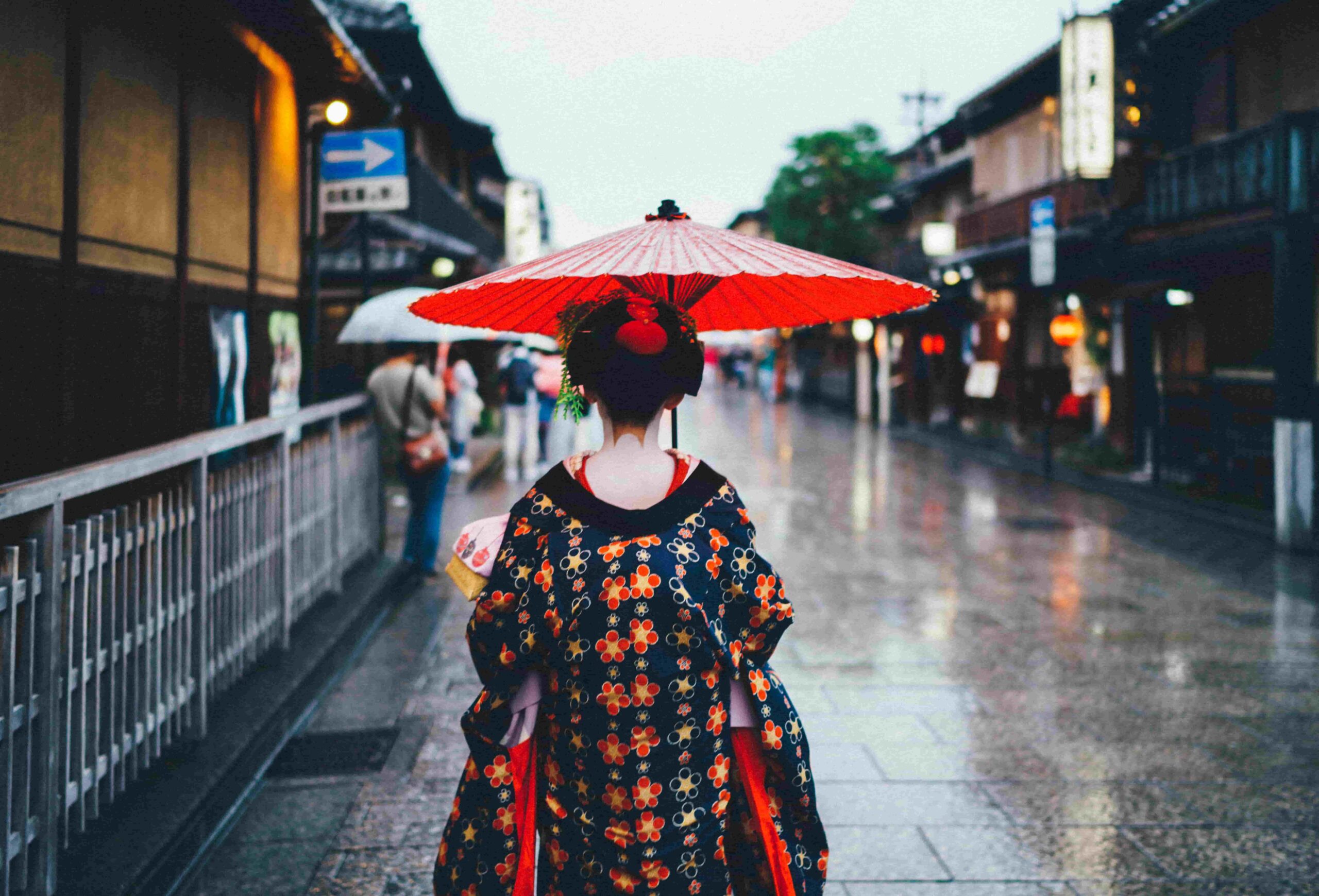
April in Kyoto heralds the arrival of the enchanting cherry blossoms, casting a spell of ephemeral beauty across the city. One of the must-attend events during this season is the Maiko and Geiko performance at Kamogawa Odori. Steeped in tradition, this annual dance showcase features Kyoto’s apprentice geisha and accomplished geiko, offering a mesmerizing display of elegance and grace. The delicate cherry blossoms create a picturesque backdrop for this cultural extravaganza, enhancing the overall experience. Securing tickets for the Kamogawa Odori has become more accessible, thanks to online platforms. Visitors can conveniently purchase tickets online, streamlining the process and ensuring a seamless entry to this captivating event. This modern approach to ticketing enhances the overall experience, allowing attendees to focus on the cultural richness and artistic finesse of the Maiko and Geiko performances without the hassle of queuing.
May
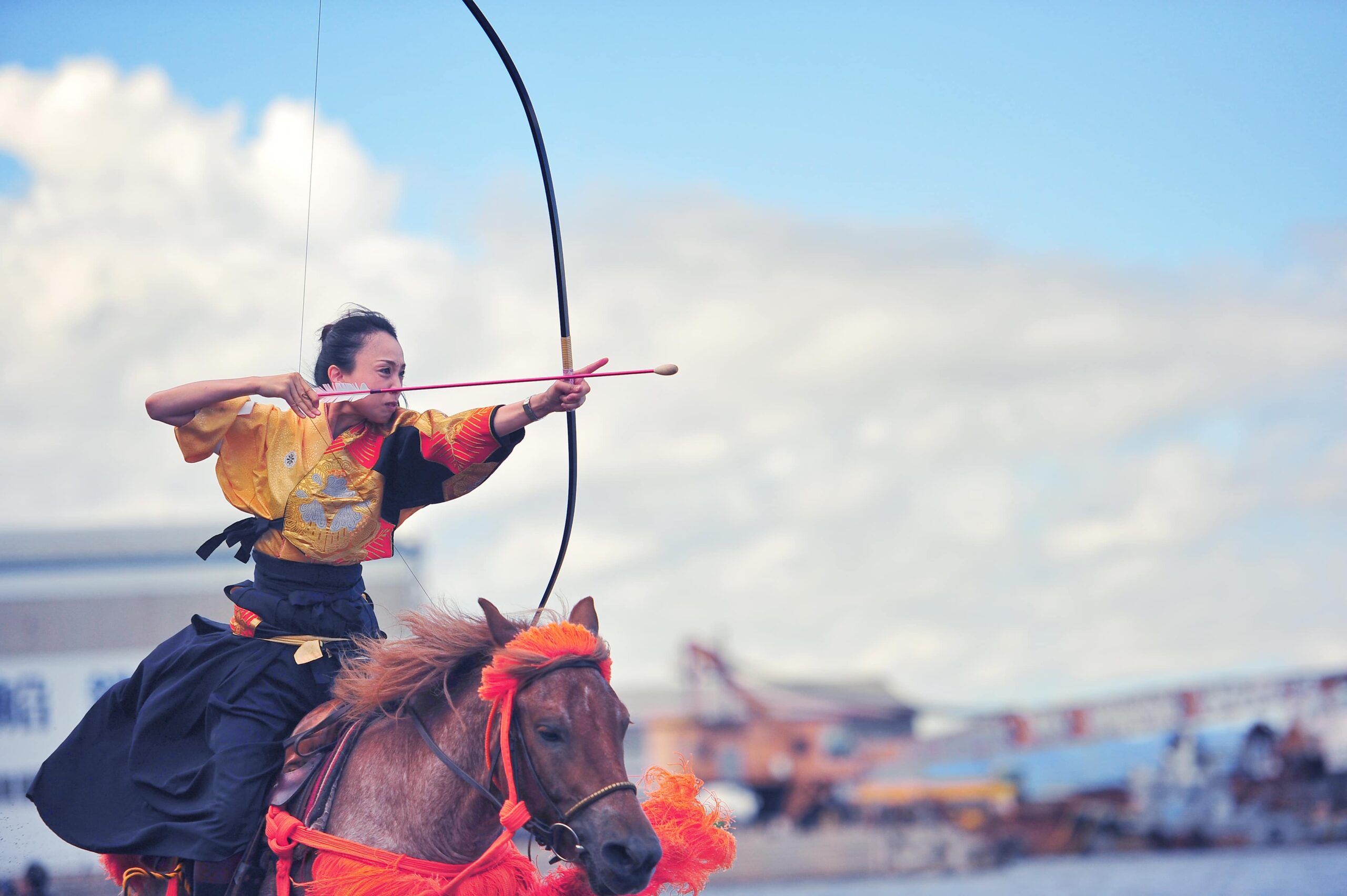
May in Kyoto beckons with cultural and artistic allure. The renowned Kyotographie, an international photography festival, transforms the city into a captivating gallery showcasing diverse photographic works. It’s a unique opportunity to explore Kyoto’s charming streets while immersing oneself in the world of visual storytelling. Adding to the cultural tapestry is the Aoi Festival held on May 15 annually. While the main event might seem mundane, featuring a grand procession with people riding horses and engaging in archery (yabusame), it is an integral part of Kyoto’s cultural heritage. The festival, believed to have originated in the 6th century, offers a glimpse into the city’s historical rituals. The highlight of the Aoi Matsuri is the Yabusame, where archers on horseback showcase their precision and skill. This spectacle is free to witness, but for a more premium view, tickets can be purchased. Given its popularity, arriving early, around 9 a.m. or 10 a.m., is advisable, as the festivities usually commence from 1 p.m., and the streets become densely packed with spectators eager to partake in this traditional extravaganza.
June
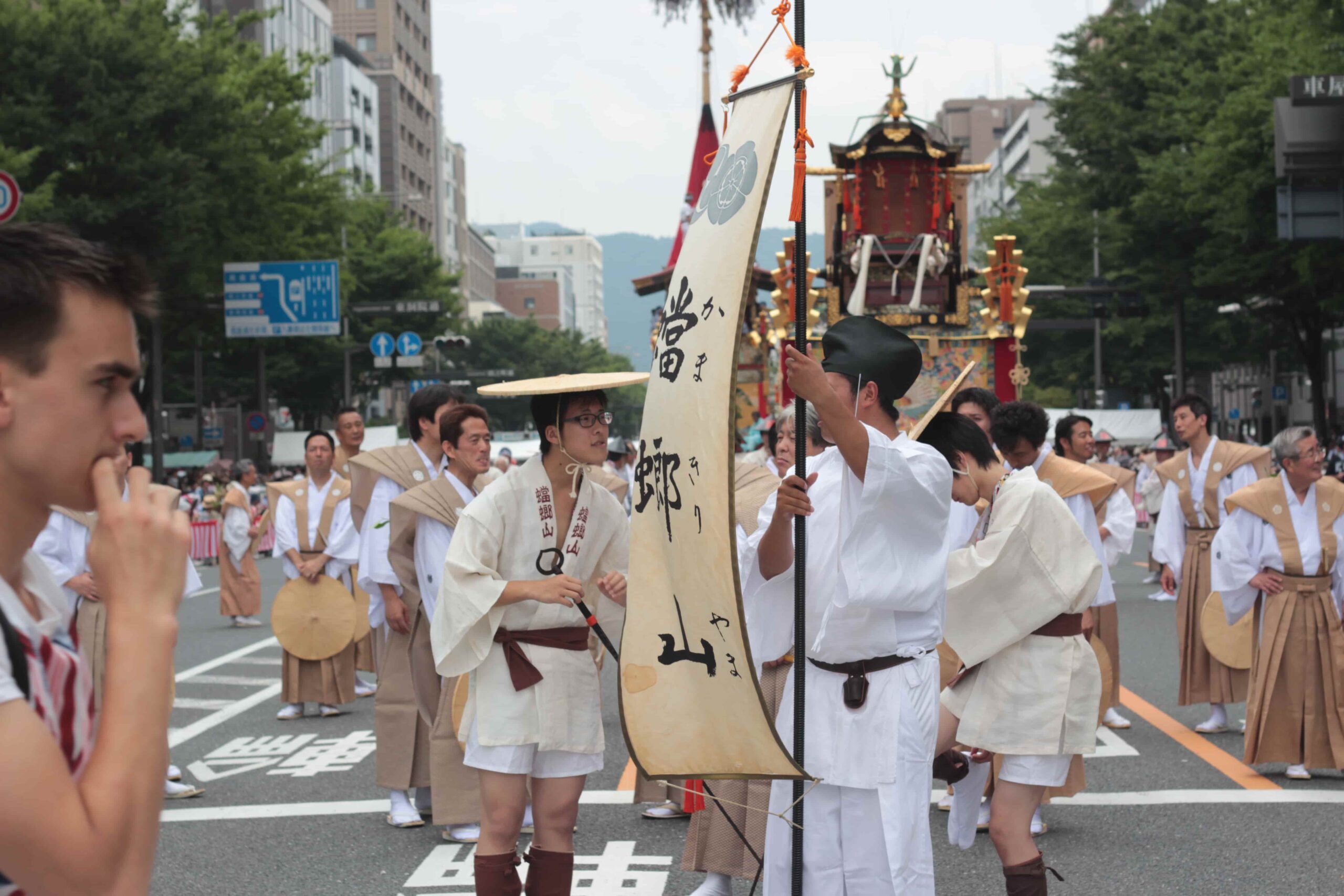
June in Kyoto unfolds with the grandeur of Gion Matsuri, one of Japan’s most celebrated festivals that dates back to the 9th century. The entire month is dedicated to the preparations and festivities, culminating in the renowned Yamaboko Junko procession on July 17. Gion Matsuri is a captivating spectacle featuring towering floats adorned with intricate tapestries, reflecting the city’s rich cultural heritage. The streets of Kyoto come alive with vibrant parades, traditional music and spirited processions showcasing the city’s traditional craftsmanship. The Yasaka Shrine, central to the festival, becomes a focal point of lively activities, drawing locals and tourists alike to witness the vibrant energy that permeates the air. Beyond the festival, June also offers a serene ambiance with the arrival of the rainy season. While occasional showers bring lush greenery and a refreshing coolness to the city, visitors can explore Kyoto’s iconic landmarks, such as Kinkaku-ji and Fushimi Inari Shrine, amidst a more tranquil setting. The juxtaposition of Gion Matsuri’s dynamic festivities and the serene beauty of Kyoto in June creates a unique and captivating experience for those seeking a blend of tradition and natural charm.
July
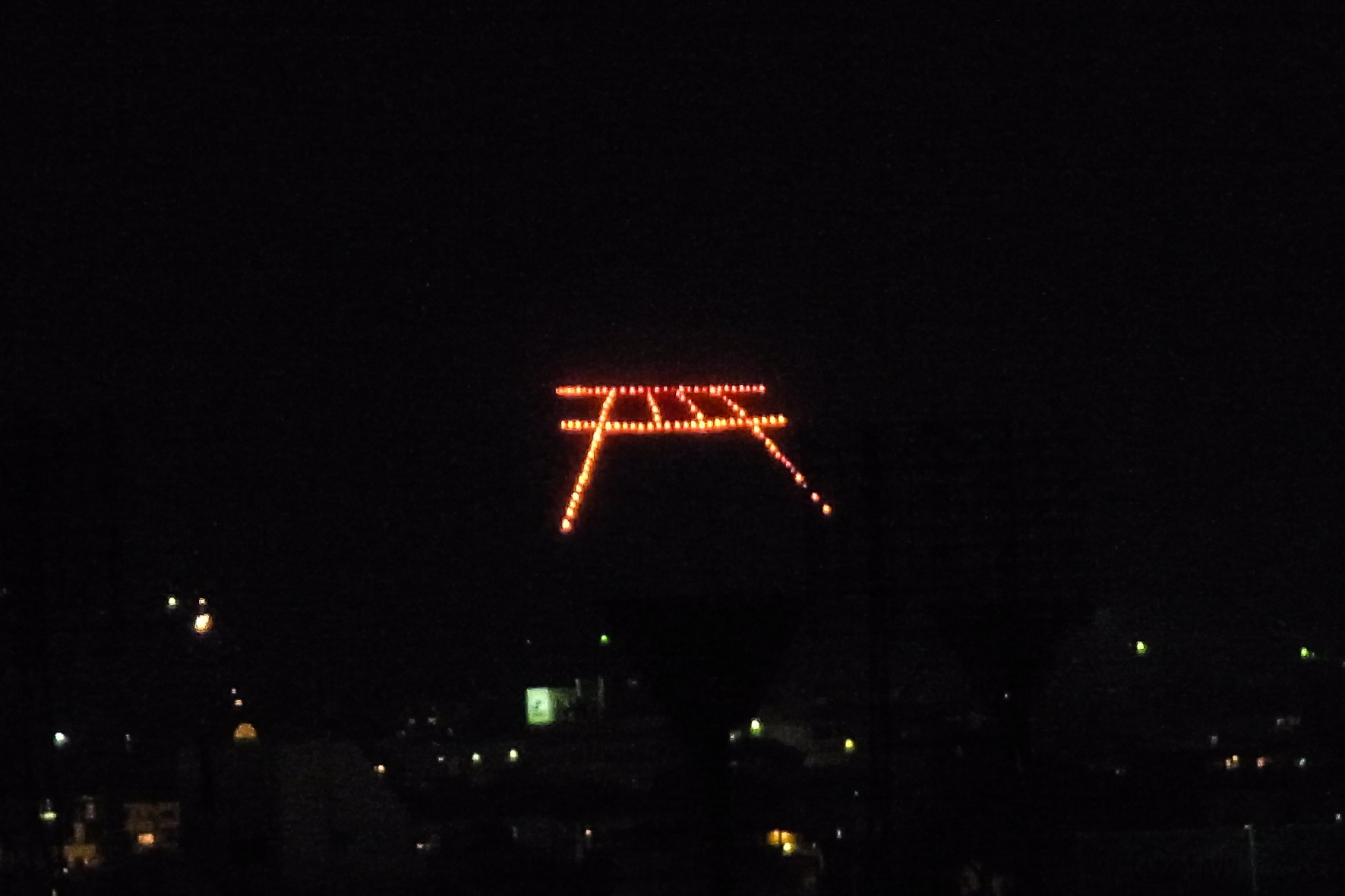
July in Kyoto heralds the renowned Gion Matsuri, one of Japan’s most iconic and elaborate festivals. This month-long celebration kicks off with the vibrant procession of Yamahoko Junko, featuring elaborate floats adorned with traditional tapestries and carrying sacred treasures through the streets of Gion. The festival’s rich cultural displays and lively atmosphere draw locals and tourists alike, making it a must-attend event. As July transitions into August, Kyoto hosts the awe-inspiring Gosanokuribi, the Daimonji Festival. The highlight of this event is the ceremonial burning of massive Chinese characters on five mountains surrounding the city, a spectacle that symbolizes sending ancient spirits back to the other world. The fiery glow of these characters illuminates the night sky, creating a surreal and captivating experience.
August
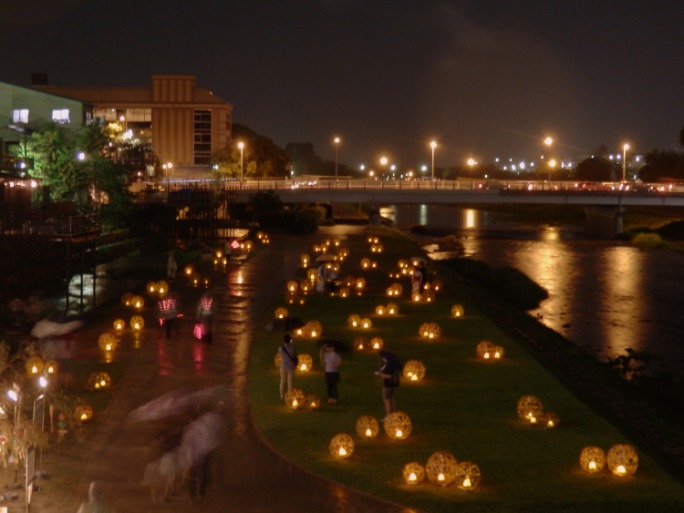
In addition to the Daimonji Festival, Kyoto also has Kyo no Tanabata and the Arashiyama Toro Nagashi Festival in August. Kyo no Tanabata, Kyoto’s version of the Star Festival, is a charming celebration inspired by the traditional Tanabata festivals celebrated across Japan. During Kyo no Tanabata, the streets of Kyoto, particularly around the Teramachi and Shinkyogoku shopping arcades, come alive with vibrant decorations. Elaborate paper crafts, known as “tanzaku,” are adorned with wishes and hung on bamboo branches. The city transforms into a colorful and enchanting spectacle, inviting locals and visitors alike to partake in the festivities. The event creates a magical atmosphere, allowing people to appreciate both the cultural and artistic aspects of Kyoto. The Arashiyama Toro Nagashi Festival takes place on August 16. This event is a mesmerizing display of lantern-lit boats floating down the Hozugawa River against the backdrop of the iconic Togetsukyo Bridge. The glow from the lanterns reflects beautifully on the river, creating a serene and enchanting ambiance. The festival commemorates the end of the Obon season when it is believed that ancestors’ spirits return to the other world. The highlight of the evening is a stunning fireworks display that adds a touch of magic to the natural beauty of Arashiyama. Locals and visitors gather along the riverbanks to witness this breathtaking spectacle and partake in the festivities.
September
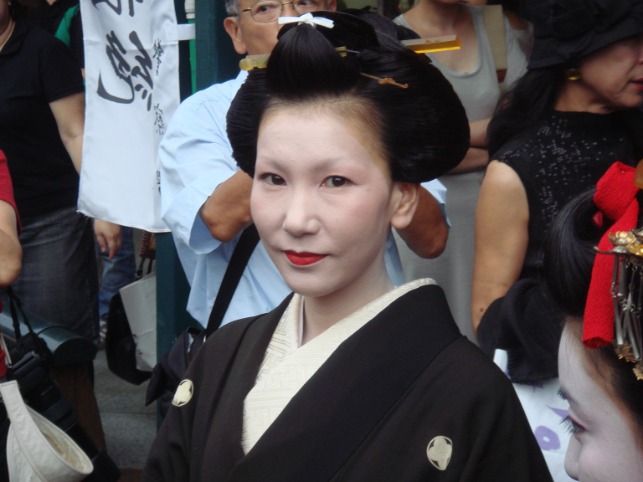
September brings slightly cooler weather and a plethora of traditional events and festivals. Kushi Matsuri, the Comb Festival, unfolds annually in Kyoto in early September, a captivating tribute to the city’s cultural richness. Centered around the symbolic comb, denoting the protection of hair and beauty, the festival showcases vibrant processions with ornate portable shrines and elegantly attired geisha and maiko. This celebration is a living canvas of Kyoto’s cultural heritage, where traditional music, dance and rhythmic taiko drums create an immersive atmosphere. Meigetsu Kangen-sai is another popular event in September and it takes place at the enchanting Daikaku-ji Temple. This festival is a celebration of Japanese classical court music, or gagaku, performed under the soft glow of the harvest moon. Against the backdrop of the temple’s serene pond and surrounded by vibrant autumn foliage, the ancient melodies of gagaku echo through the air, creating a tranquil and spiritual atmosphere. Visitors are invited to partake in the beauty of the season, experiencing a harmonious blend of music, nature and cultural heritage.
October
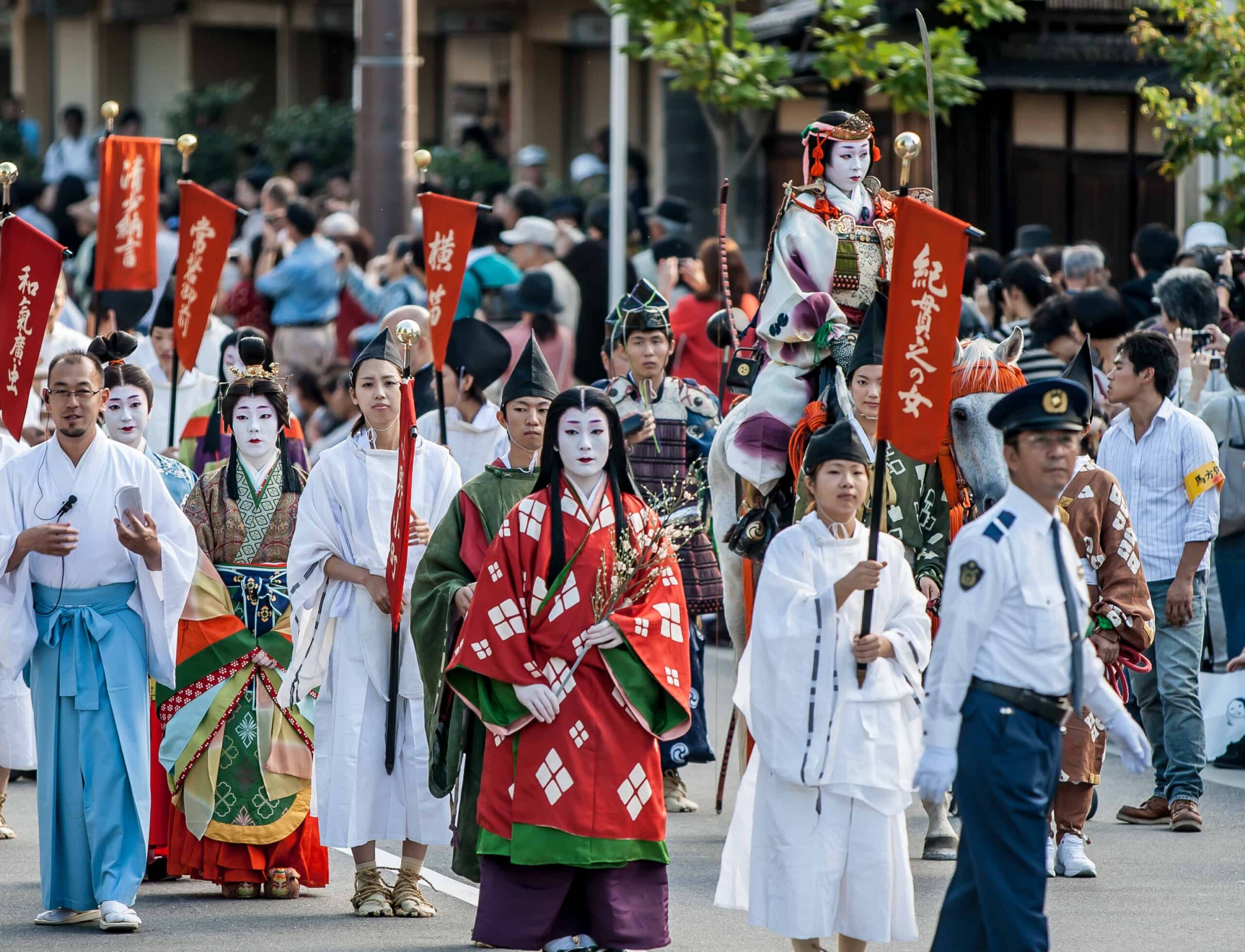
October in Kyoto unfolds with a dynamic tapestry of cultural events, making it an exhilarating time to explore the city. The Jidai Matsuri, or the Festival of the Ages, takes center stage, offering a vivid procession showcasing Kyoto’s rich history. From samurai to geisha, participants don period costumes, parading through the city streets in a captivating spectacle that encapsulates centuries of Japanese heritage. For those seeking a more fiery experience, the Kurama no Hi Matsuri beckons. Nestled away from the city center, this fire festival promises a mesmerizing display of flaming torches and spirited processions. It’s an immersive cultural experience that contrasts the serene beauty of Kyoto with the wild energy of the festival. Venturing into the outskirts of Kyoto, the Nuit Blanche Kyoto adds a contemporary flair to October nights. This all-night arts festival transforms various city spaces into interactive art installations, creating a magical atmosphere that encourages exploration and connection.
November

November unveils a mesmerizing transformation in Kyoto as the vibrant autumn foliage, known as koyo, blankets the city in hues of red and gold. While this month may not be marked by specific events, the enchanting beauty of the changing leaves becomes the main attraction. Kyoto’s landscape is a canvas of red leaves, creating a picturesque setting for leisurely strolls through iconic spots such as Kiyomizu-dera and Tofuku-ji Temple. The city’s commitment to preserving its cultural heritage is evident in the autumn opening of usually restricted areas within shrines. Many shrines, including the renowned Fushimi Inari Taisha, permit access to their main spaces, providing a unique opportunity for visitors to immerse themselves in the spiritual and historical ambiance. As daylight fades, Kyoto’s landmarks come alive with illuminations, enhancing the magical atmosphere. The ethereal glow of red leaves under soft lights creates a surreal experience, making November an ideal time to revel in the natural and cultural wonders of this historic city.
December
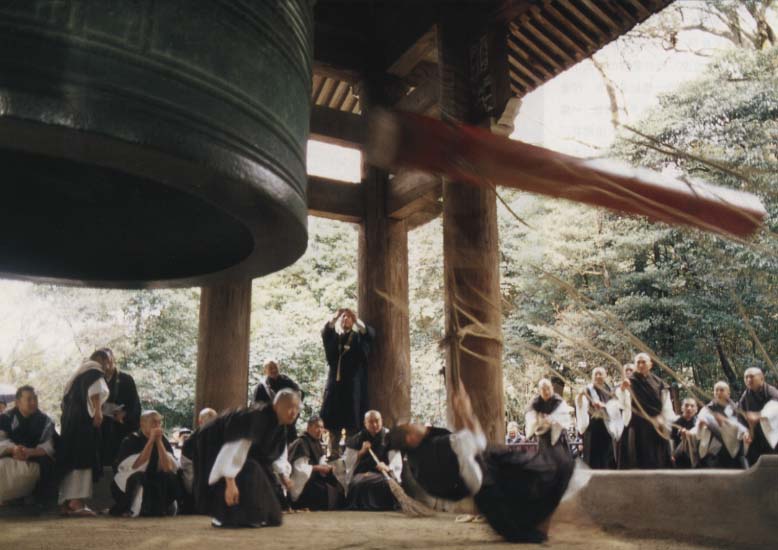
December in Kyoto offers a serene and introspective atmosphere as the city gracefully ushers in the winter season. While the concept of a grand citywide countdown event is not a prominent feature, the local charm lies in more traditional celebrations. Engaging in the “joyanokane” ritual, where temple bells are struck 108 times to symbolize the purification of human sins, is a spiritually enriching experience. Many locals opt for a quieter New Year’s Eve, gathering at temples for a collective and contemplative welcome to the coming year. For foreigners seeking to partake in this cultural tradition, notable temples like Chion-in open their doors to everyone. However, it’s essential to plan ahead and book in advance due to the popularity of these events. Beyond Chion-in, several other temples also offer similar New Year’s Eve ceremonies, providing a unique opportunity to join the local community in welcoming the new year in a traditional Japanese manner. While the absence of bustling citywide events distinguishes Kyoto’s December, the tranquil ambiance and cultural depth make it an ideal time for a more introspective and immersive experience in this historic city.

The Millennials Kyoto is the ultimate high-tech capsule hotel experience located in Kyoto’s bustling Kawaramachi district. IoT integration, and a lobby that doubles as a coworking space.
Click the button below to book your stay at The Millennials Kyoto.

